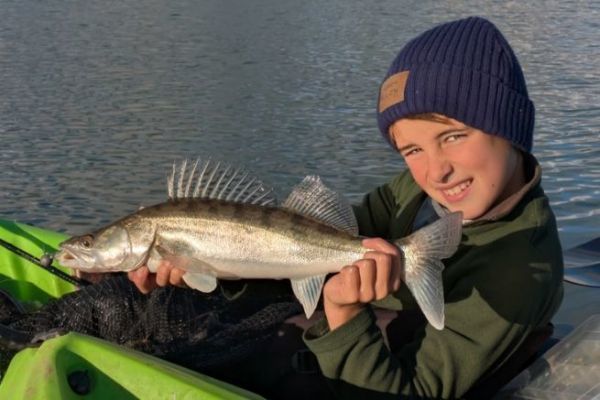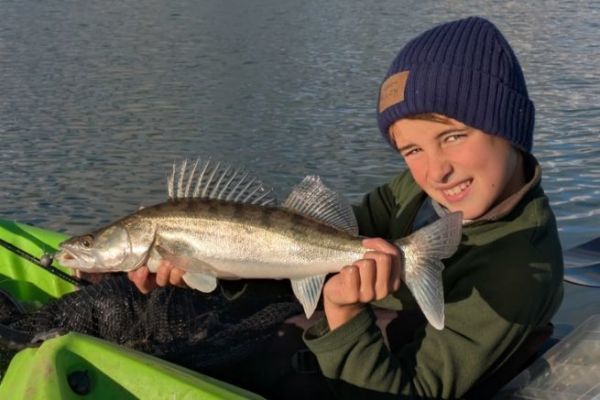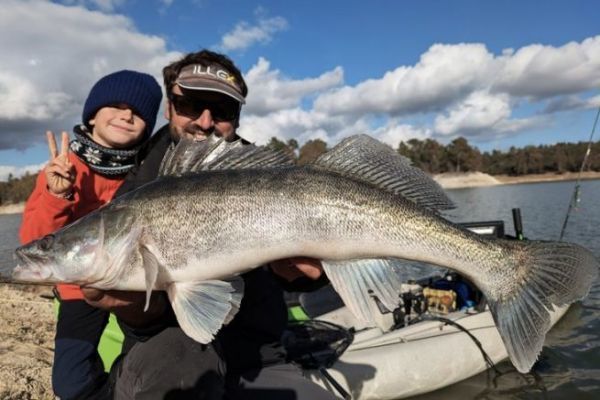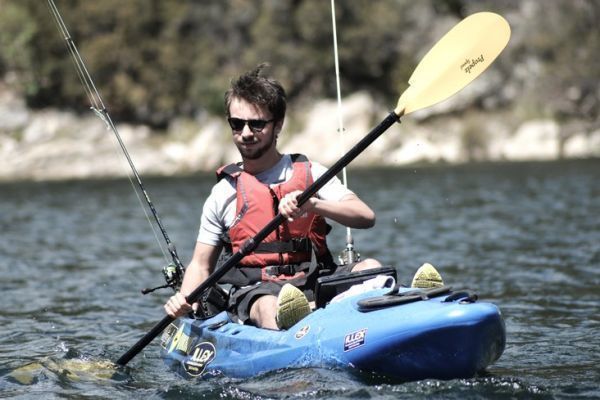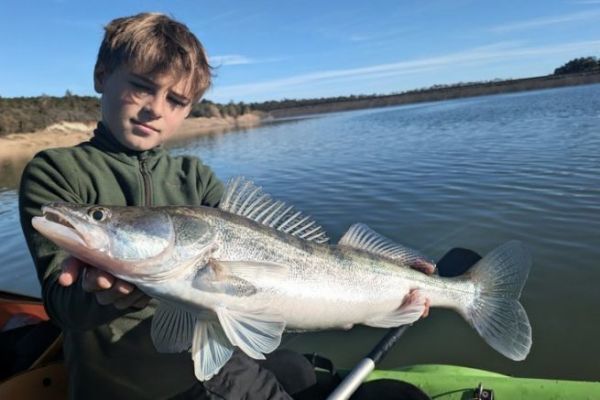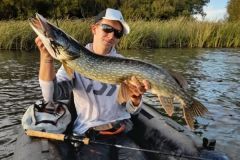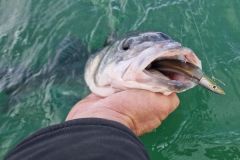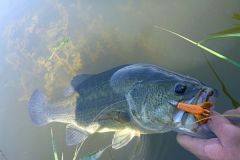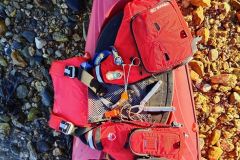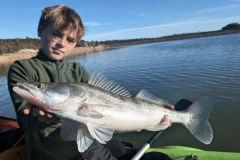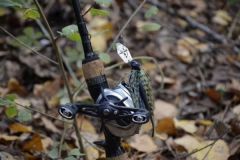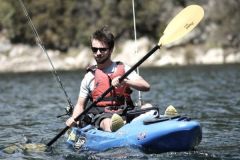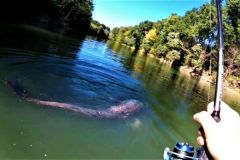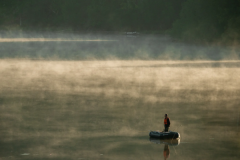This goes hand in hand with the development and growing popularity of lure fishing techniques for predators. Aside from the sporting aspect, it really is the missing link between float tubes and boats, and represents the best compromise, with the advantages of both!
What is a kayak?
A kayak is a lightweight craft propelled by arm or leg power.
The exception is certain models, which can now be fitted with an electric motor.
The paddle is the traditional means of propulsion for kayaks.
Today, kayak hulls are mainly made of roto-molded polyethylene, although some inflatable models are also available to save space. The hull is open at the top with a seat for the angler, located slightly towards the rear of the kayak.
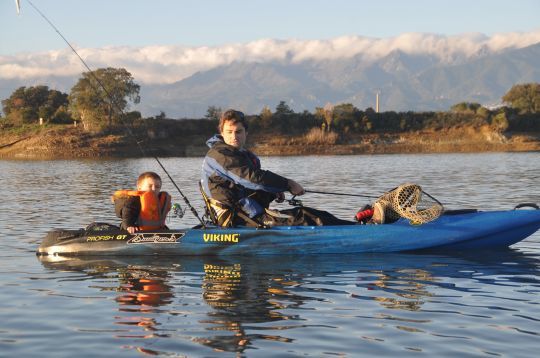
Sit-on-top" kayaks mean that you sit on the deck, rather than on your leg inside the hull or in a skirt around your waist. The deck of a fishing kayak is wide and open, more welcoming and practical than a conventional kayak.
The hull, the immersed part of the hull, is designed to glide straight over the water, for optimum balance. The wide hull design increases safety and stability, but reduces sailing speed. The bow and stern are profiled or pointed for improved glide and seaworthiness.
Today, these kayaks are virtually unsinkable, and fishing has enabled them to evolve and become more technically advanced. Today's kayaks weigh between 25 and 45 kilograms.
The lighter models can be launched on their own, without wheels or carts, and are easy to load onto roof racks.
Today, kayaks are highly relevant to lure fishing for predators.
Democratizing fishing kayaks
Well-established in the USA, Australia, New Zealand and France at sea, kayak fishing is struggling to establish itself in freshwater in France.
Fortunately, more and more enthusiasts are discovering the benefits of kayak fishing and the countless possibilities it offers.
The trend has been gaining momentum over the past two years, and more and more freshwater anglers in France and Europe are falling in love with the sport, thanks to a wider range of products designed to satisfy a broad spectrum of anglers.
Kayaks can cater for beginners on a tight budget who go out fishing a few times a year, as well as experienced anglers who go out on more than one occasion.
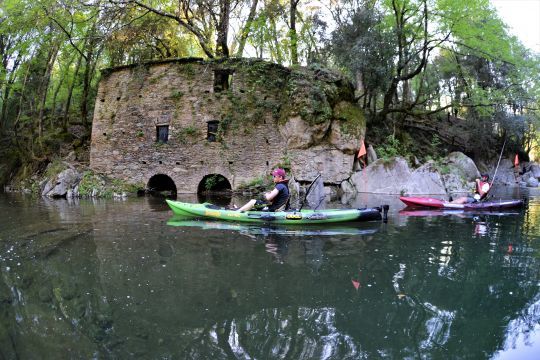
This lightweight craft offers many advantages for sport fishing. Fishing kayaks are increasingly sophisticated, high-performance and affordable. Their ergonomics are designed for optimum performance in fishing situations.
Several aspects differentiate fishing kayaks from more traditional kayaks or canoes. Their hulls are wide, designed to offer the best ratio between stability, balance and gliding performance (hydrodynamics), while at the same time lightening the overall weight.
This allows you to move around with minimal effort, while being precise in the positioning of the kayak and being able to fish with maximum comfort. Most of these kayaks even allow you to fish standing up!
This stability also means you can take on board all the gear you need without fear of tipping over. It's even possible to take a child on board, or to fish in pairs on certain two-seater (or tandem) models.
The seat is designed and reinforced for optimum comfort during long fishing sessions, minimizing back pain. The kayaks' high displacement capacity makes them particularly well-suited to discovering and prospecting rivers and large lakes. They are highly versatile boats.
Their shallow draught means you can fish very shallow areas in total silence. This is a real plus when fishing to discreetly tackle wary fish in transparent waters with minimum visual impact.
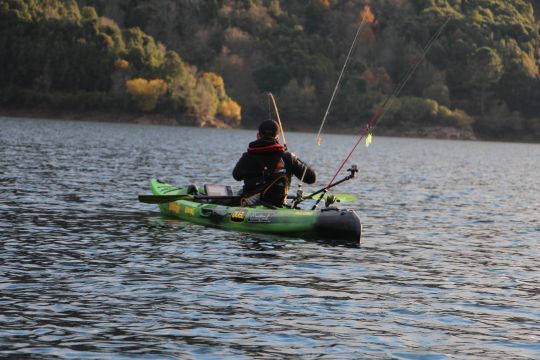
In addition to performance in fishing situations, kayaking is resolutely sporty, with propulsion using arms or legs. Even with an electric motor, you have to use your paddle to position the skiff.
This is part of the fun of kayak fishing. The sensation of gliding and freedom is one of the kayak's greatest assets, unmatched by any other floating device. Fighting close to the water is a great adrenaline rush, as you get up close and personal with the fish.
In the following articles, we'll look at the different propulsion technologies used in modern fishing kayaks, the advantages of kayaks over float tubes and boats, equipment and fittings, and fishing techniques that are particularly relevant to kayaking. As you'll see, there's something for every taste and budget.

 /
/ 